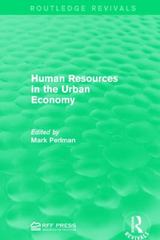Case 11.3 Getting children to eat vegetables Obesity and health-related problems like heart disease and diabetes are increasing in many high-income countries. Furthermore the incidence of these problems appears to be increasing fastest among school-age children. The costs to national economies are sub- stantial in terms of decreased productivity and increased health care costs. Health experts are fairly unanimous in laying the blame on bad diet and lack of exercise. The problem appears to be greatest among low-income households, either because of lack of knowl- edge or because of the high perceived cost of buying healthy foods such as fruit and vegetables.CONCLUSION ..................... A couple of experiments have been carried out in a study by Just and Price (2013) in order to examine the effects of incentives on the consumption of fruit and vegetables. Objectives of the study There were three main objectives involved: 1 To examine and compare the effects of different types of incentive. 2 To examine and compare the effects on children with different parental incomes, 3 To examine the cost-effectiveness of an incentive program. Experimental design These experiments involved providing a variety of different incentives in 15 different schools (in the first experiment) in order to see how the consumption of fruit and vegetables at school lunches would respond. At some of these schools as many as 77% of the pupils received free or reduced price lunches because of low parental income, while in other schools the proportion was only 17%. Thus it was possible to see how parental income affected increased consumption. Three different variations of types of incentive were used: amount of cash reward (5 cents and 25 cents per day); cash and prize; and immediate reward and delayed reward. This allowed the researchers to use six different treatments: (1) large immediate cash reward, (2) large delayed cash reward, (3) immediate prize, (4) delayed prize, (5) immediate small cash reward, and (6) no incentive (as a control). The delay in each case was that the reward was received at the end of the month. The prize involved participation in a raffle, where the total value of the prizes was equal to the number of kids who ate their fruits or vegetables for that day multiplied by 25 cents. Many of the prizes were related to some form of active recreation such as rip-sticks, tennis rackets, soccer balls and swim goggles. The treatment days occurred over five lunch periods spanning 2-3 weeks. On each treat- ment day there was a message in the morning announcements about the reward students could receive by eating a serving of fruits or vegetables that day. Prizes were displayed near where data was collected, visible to all students. Results 1 Overall, the proportion of children consuming at least one serving of fruit and vegetables increased from a baseline of 33% before the experiment to 60% (an increase of 80%). The incentive resulting in the largest increase was the larger immediate cash reward, which increased the proportion to 71%, whereas the delayed cash reward of the same amount increased the proportion to 63%. Surprisingly, the delayed prize increased the proportion more (to 60%) than the immediate prize (53%). The researchers propose that this difference is explained by the fact that, when the prize was delayed, all the prizes for the five-day period were displayed as opposed to just the prizes for one day. The experiment revealed a substantial difference in effect between the schools with the highest-income children and those with the lowest-income children. For the rich- est children the increase in consumption was only 18%, whereas for the poorest the increase was 38%.BEHAVIORAL ECONOMICS: SUMMARY AND OUTLOOK . . . . ................................................. 3 The program was found to be highly cost-effective compared to other programs designed to increase consumption of fruit and vegetables. The main aspect of this was that wastage, in terms of items thrown in the trash, was reduced by 43% compared with the baseline situation. Administrative costs, involving the cost of the rewards and the labor costs of distributing the rewards, were also low. Two other findings emerged from the study: 1 There was no evidence of the incentive program reducing the number of servings consumed by children who normally ate more than one serving a day. The researchers originally feared that the program might create a social norm of consuming exactly one serving of fruit/ vegetables per day, but this did not appear to be the case. 2 In a second experiment, involving a further eight schools, the after-effects of the incentive program were monitored in order to examine the long-run effects of such a program. Although the proportion of children consuming fruit and vegetables remained higher than the original level for the two weeks immediately following the program, in the next two weeks (two to four weeks after the incentive program ended) consumption returned to the baseline level before the program started. Questions What aspects of behavioral economics are relevant in this study? Explain the significance of the difference in behavior between low-income and high- income children. 3 Comment on the long-run effects of the incentive program. 4 What other incentives do you think might be effective in increasing children's con- sumption of fruit and vegetables, apart from the ones used in the study









